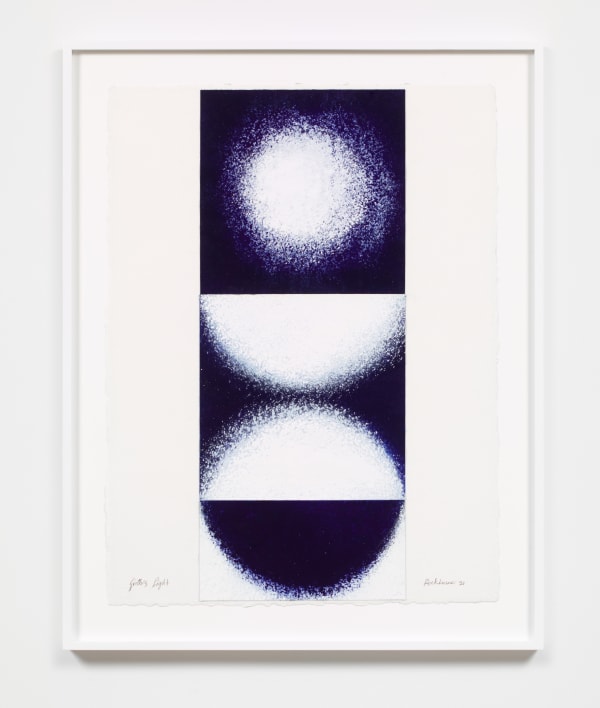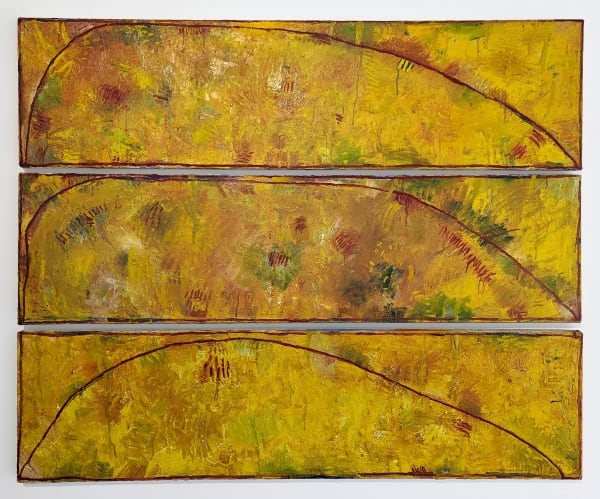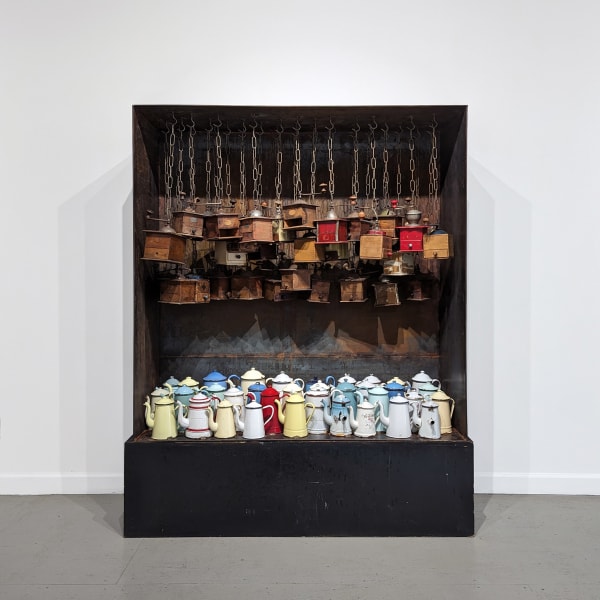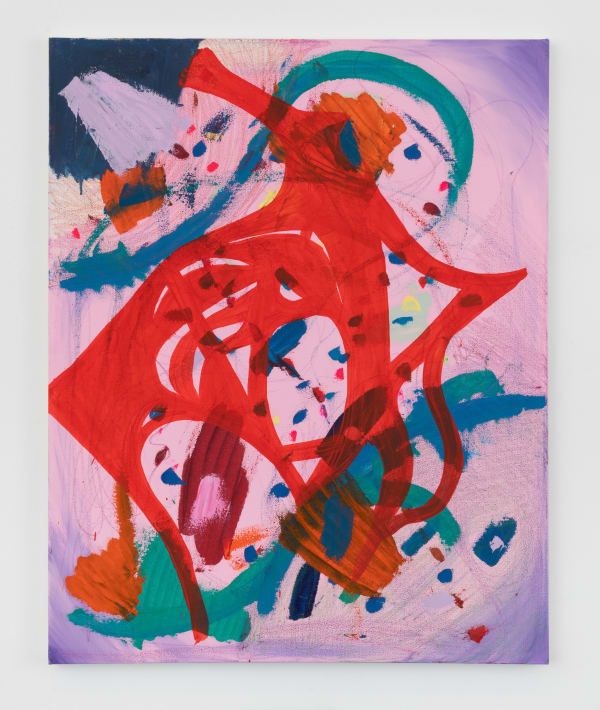Artists on the Bowery Part 4: Arman, Joanne Greenbaum, Elizabeth Murray, Dorothea Rockburne, Jack Tworkov
WESTWOOD GALLERY NYC presents Artists on the Bowery Part 4, a group exhibition of recent and historic paintings, works on paper, and sculpture by artists Arman, Joanne Greenbaum, Elizabeth Murray, Dorothea Rockburne, and Jack Tworkov. This is the fourth exhibition in a series focused on Contemporary artists who have lived and worked in the Bowery Arts District between 1960s-present in New York City, curated by James Cavello. WESTWOOD GALLERY NYC is pleased to collaborate on the exhibition with the Arman Marital Trust, Mitchell-Innes & Nash, Gladstone Gallery, Estate of Elizabeth Murray, David Nolan Gallery, Van Doren Waxter, Estate of Jack Tworkov, and Artist Estate Studio.
As a cultural hub of New York City, the Bowery continues to reveal the history of over four hundred artists that lived and/or worked on its corridor from the 1940s through today. These artists worked concurrently to develop and participate in their own historic artistic movements or push beyond traditional categorization to break the mold of how we’ve come to view art today. Each of the five artists included in the exhibition exemplifies the dynamic practices that have contributed to the legacy of the Bowery Art District.
-
 Dorothea Rockburne, Lamenting Angels #3, 2021
Dorothea Rockburne, Lamenting Angels #3, 2021 -
 Dorothea Rockburne, Giotto's Night, 2021
Dorothea Rockburne, Giotto's Night, 2021 -
 Dorothea Rockburne, Giotto's Light, 2021
Dorothea Rockburne, Giotto's Light, 2021 -
 Elizabeth Murray, Giant Maiden #2-5, 1972
Elizabeth Murray, Giant Maiden #2-5, 1972
-
 Elizabeth Murray, Three Golden Delicious Apples in Morning Light, 1972
Elizabeth Murray, Three Golden Delicious Apples in Morning Light, 1972 -
 Jack Tworkov, P73 #1, 1973
Jack Tworkov, P73 #1, 1973 -
 Jack Tworkov, OP-Q2-77-3.5.8 Series, 1977
Jack Tworkov, OP-Q2-77-3.5.8 Series, 1977 -
 Jack Tworkov, R. A. on P #4, 1972
Jack Tworkov, R. A. on P #4, 1972
-
 Artists on the Bowery: Part 4 | Installation View
Artists on the Bowery: Part 4 | Installation View -
 Artists on the Bowery: Part 4 | Installation View
Artists on the Bowery: Part 4 | Installation View -
 Artists on the Bowery: Part 4 | Installation View
Artists on the Bowery: Part 4 | Installation View -
 Artists on the Bowery: Part 4 | Installation View
Artists on the Bowery: Part 4 | Installation View -
 Artists on the Bowery: Part 4 | Installation View
Artists on the Bowery: Part 4 | Installation View -
 Artists on the Bowery: Part 4 | Installation View
Artists on the Bowery: Part 4 | Installation View -
 Artists on the Bowery: Part 4 | Installation View
Artists on the Bowery: Part 4 | Installation View -
 Artists on the Bowery: Part 4 | Installation View
Artists on the Bowery: Part 4 | Installation View -
 Artists on the Bowery: Part 4 | Installation View
Artists on the Bowery: Part 4 | Installation View -
 Artists on the Bowery: Part 4 | Installation View
Artists on the Bowery: Part 4 | Installation View -
 Artists on the Bowery: Part 4 | Installation View
Artists on the Bowery: Part 4 | Installation View
WESTWOOD GALLERY NYC presents Artists on the Bowery Part 4, a group exhibition of recent and historic paintings, works on paper, and sculpture by artists Arman, Joanne Greenbaum, Elizabeth Murray, Dorothea Rockburne, and Jack Tworkov. This is the fourth exhibition in a series focused on Contemporary artists who have lived and worked in the Bowery Arts District between 1960s-present in New York City, curated by James Cavello. WESTWOOD GALLERY NYC is pleased to collaborate on the exhibition with the Arman Marital Trust, Mitchell-Innes & Nash, Gladstone Gallery, Estate of Elizabeth Murray, David Nolan Gallery, Van Doren Waxter, Estate of Jack Tworkov, and Artist Estate Studio.
As a cultural hub of New York City, the Bowery continues to reveal the history of over four hundred artists that lived and/or worked on its corridor from the 1940s through today. These artists worked concurrently to develop and participate in their own historic artistic movements or push beyond traditional categorization to break the mold of how we’ve come to view art today. Each of the five artists included in the exhibition exemplifies the dynamic practices that have contributed to the legacy of the Bowery Art District.
Arman (1928-2005) was a French-born American painter, sculptor, graphic artist, and leader in the Nouveau Réaliste movement. Recognized for his Accumulations series of found objects, Arman worked in many overlapping mediums that questioned the definition of painting and sculpture. The exhibition highlights three works from the mid-1990s to his last series. Coule de Source (It’s Logical) (1994) is a humorous accumulation box with over thirty hanging coffee grinders above coffee pots; Untitled (1998) suspends a sliced, acrylic-dipped stuffed armchair on canvas; and El Coloso (The Colossus) (2004) an homage to Goya’s El Coloso, refashions Goya’s painted figure as a sliced bass fiddle, a recurring music object across Arman’s oeuvre. El Coloso, one of the artist’s final paintings, has never been exhibited before.
Known for her layering of abstract shapes in a complex pictorial space, Joanne Greenbaum (b. 1953) creates paintings through experimental processes similar to automatic writing. In her compositions, the boundaries between painting and drawing blur, with traditional drawing media acting as the guide for painted elements. In her canvases on view, Pink & Blue with Numbers (2005), and two recent Untitled paintings, she uses her distinctive technique to apply various layers in oil, acrylic, crayon, marker, and flashe in methods that alternate between sequential layers. The forms fluctuate between order and chaos, balance and rhythm, drawing and painting, expressionist and logical, and as critic John Yau states, between “artisanal competence and casual mark-making; and fine art materials and cheap hobbyist supplies.”
Elizabeth Murray (1940-2007) is a genre-defining painter who dismantled concepts from Cubism, Minimalism, Surrealism, and Pop Art and rebuilt them into her own unique evocative canvases. Across her innovative body of work, she was always grounded in the physicality of paint. The two works on exhibit were painted in her Bowery studio at 27 Cooper Square, a cultural touchstone of the neighborhood. Representative of Murray’s thickly painted Minimalist inspired compositions of the early 1970s, Giant Maiden #2-5 (1972) and Three Golden Delicious Apples in Morning Light (1972), offer insight into the artist’s experimentation with scale, shape, and form.
Dorothea Rockburne (b. 1932) has drawn interest from mathematics and astronomy for over five decades, creating paintings, drawings, and installations. The exhibition features four works on paper from her recent Giotto Drawings and Lamenting Angels series, inspired by Giotto’s frescoes in the Arena Chapel, Padua, Italy. In each abstract composition, Rockburne captures the emotional intensity of Giotto’s figures and scenes, abstracting angels from the ‘Lamentation of Christ’ and the usage of his vibrant lapis lazuli backgrounds.
One of America’s preeminent Abstract Expressionists, Jack Tworkov (1900-1982) was at the forefront of gestural mark-making, and dramatically changed his style in the 1960s to adopt a more controlled structured process through geometric grids. The three analytical paintings on view, one large format on canvas and two on paper, take on the compositional possibilities of rectangles and parallelograms with both bright and muted color variations. In P73 #1 (1973) and R. A. on P #4 (1972), subtle colors delineate the perspective and stretching of rectangular planes across space. In OP-Q2-77-3.5.8 Series (1977), Tworkov invokes the Fibonacci numbering sequence to pre-plan a structural variation while leaving color and shape to intuition.
Arman, Greenbaum, Murray, Rockburne, and Tworkov are artists who broke through boundaries in medium, process, and style. Arman and Greenbaum both utilized materials from different mediums to further our traditional understanding of materiality in sculpture, painting, and drawing, while Murray, Rockburne, and Tworkov categorically shifted theories from Minimalism, Conceptualism, and Abstract Expressionism to redefine the accepted definitions of pictorial space. While all five artists defy traditional art movement categorization, their individual artistic practices are intertwined with the collective networks of artists who worked, lived, and exchanged artistic inspiration on the Bowery.

























